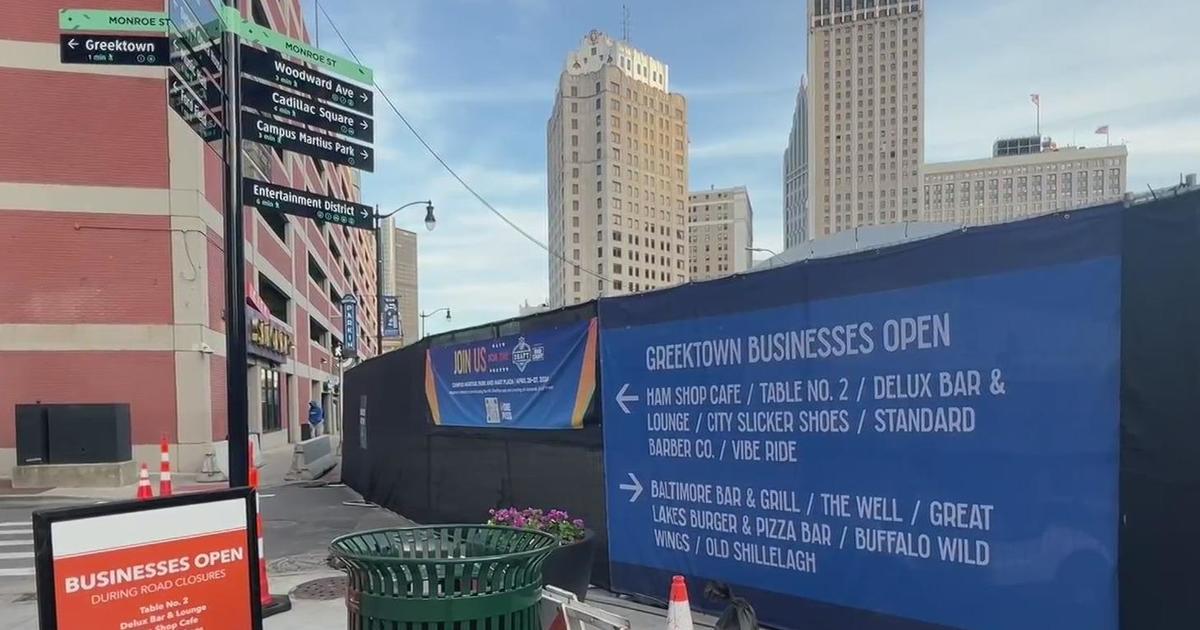Fired Up To Save $$: Pewabic Takes Advantage Of Incentives To Reduce Energy Costs
"Pewabic is found in everyday homes, in such illustrious places as the Detroit Institute of Art, the Metropolitan Museum of Art, the Freer Gallery of Art at the Smithsonian, and in a number of Detroit landmarks, including the Guardian Building, the Detroit Zoo, the Detroit Public Library and Comerica Park," said Lou Casinelli, Manager, Marketing & Communications.
Founded in 1903 by Mary Chase Perry Stratton and Horace James Caulkins, Pewabic has achieved international fame. The company's history is symbolic of Detroit: dogged determination, an entrepreneurial spirit and unwavering commitment to excellence. This beloved institution – today a nonprofit organization – is eager to share its knowledge and love of pottery and ceramics with the world. But like most nonprofits, it operates with a meager budget, making energy efficiency extremely important.
Because Pewabic has occupied the same building since 1907, Ken Southway, the company's facilities manager, faces many challenges. Fortunately, Southway has an ally – a DTE Designated Trade Ally – in Jerry Martin from Williams Refrigeration
& Heating in Warren. Together, they planned energy efficiency measures that take advantage of incentives available from DTE Energy. The incentives have led Mr. Southway on an ongoing energy-saving journey.
A Helpful Ally
That journey began in March 2011, when Williams Refrigeration & Heating tuned up two boilers, earning Pewabic a $400 rebate from DTE Energy. As a result, Pewabic achieved immediate savings in the form of rebates and, with the boilers operating more efficiently, long-term savings in reduced energy consumption and utility bills.
"Jerry is my backbone. He tells me when incentives are available and we improve our energy efficiency accordingly," Mr. Southway said. Even more impressive energy-saving measures were implemented earlier this year.
A few years ago, Pewabic had to eliminate asbestos in another building, a job that involved removing insulating pipe wrap from a boiler. Unfortunately, they couldn't afford to put pipe wrap back on and went several years without insulation.
"Earlier this year, Jerry told me that incentives to insulate the pipes were available," said Mr. Southway. "He came, measured, gave me a quote and explained how much of a rebate we would get from DTE."
The incentives were over $1,900 for the pipe wrapping. That in turn helped the company achieve additional energy efficiency measures elsewhere in the building. For example, in June, Pewabic replaced its outdated lighting in the customer gallery with highly efficient LEDs.
Cool Lighting
"Lighting was an issue; it was inefficient and generated a lot of heat," Mr. Southway said, adding that the previous lights generated so much heat the staff would ask for the front door to be left open to help cool the gallery area.
"We had Gary Hollidge from Clor Lighting Group come in and show us various options," he added.
"We've done numerous retail operations and they all have specific color needs," Mr. Hollidge said. "We were able to work with Pewabic to switch to LED and give them lighting that best showcases their ceramic products while maximizing energy efficiency."
In addition to brightening the customer gallery and reducing heat, the new lights earned Pewabic a $712 incentive from DTE Energy. As was the case with Williams Refrigeration & Heating, Clor Lighting Group completed and submitted all of the paperwork required to receive the incentive.
"All I had to do is sign my name; they did the rest," Mr. Southway added.
More Efficient Kilns
Pewabic has also begun making its production process energy-efficient.
"We recently installed three new gas- fired kilns. The previous ones used to overheat the building. It took a day and a half to get the kilns up to 2,300° and it would take three days for them to cool down enough to remove the product," Mr. Southway said.
The new kilns require only 24 hours to heat up and cool down, resulting in increased production and significantly reduced energy costs, since less natural gas is used. Now that the kilns are working as designed – retaining rather than radiating heat – the kiln room is much cooler.
"We'll probably have to install a small heater in the kiln room in the winter," he said with a smile.
Comfortable Environment
No one ever scoffs at money, and a nonprofit such as Pewabic certainly appreciates efforts to reduce its energy budget. However, these energy measures also contribute to employee and visitor comfort – benefits that can't be quantified on the accounting ledger.
"My office is in the basement, next to the boilers," Mr. Southway said. Prior to the pipe wrapping, I would go home drenched in sweat from the heat radiating from the pipes. Now, it's much more comfortable. The same goes for the offices above the kiln room. All that escaping heat made for an unpleasant work environment. That's not the case anymore."
Mr. Southway came to Pewabic by chance and without a background in energy efficiency. Today, thanks to helpful allies such as Williams Refrigeration & Heating and Clor Lighting Group, he has become somewhat of an energy conservation expert himself, and is more attuned to helping Pewabic implement additional energy efficiency measures. A journey that began by happenstance is delivering measurable results.
This article was originally published in DTE Energy's magazine EnergySmarts.
For more tips and inspiration for small business owners,
visit CBS Small Business Pulse Detroit.



